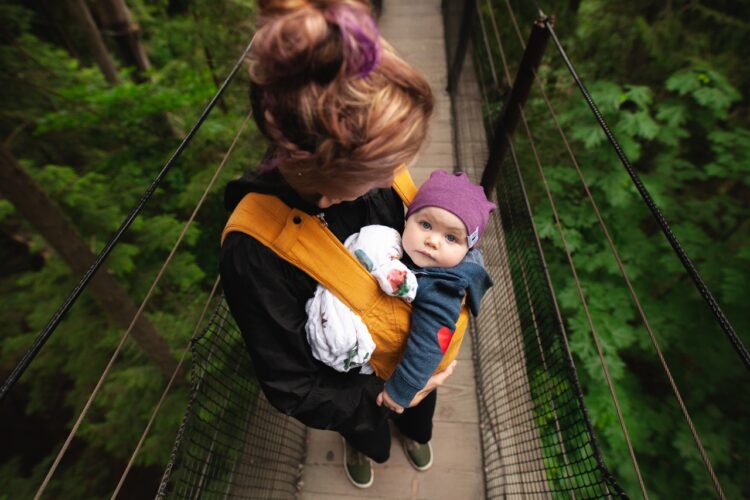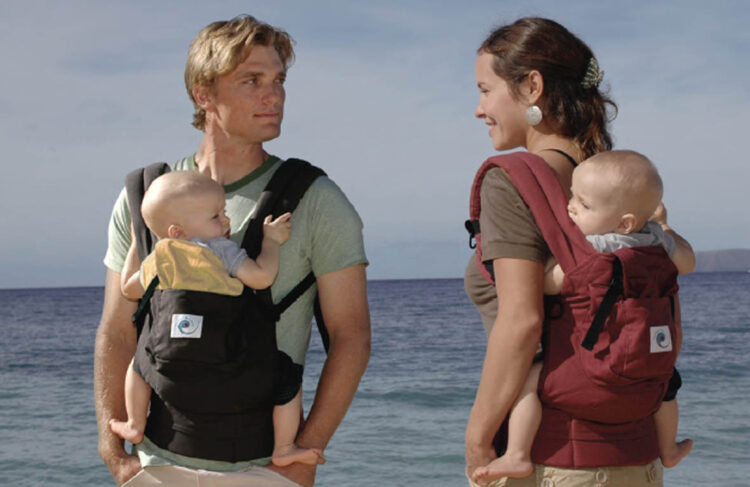Being a primary caregiver can be challenging, especially for people who have other duties within the household and outside, for example, cleaning, cooking, or going to the grocery store. This little invention has been a lifesaver for most caregivers as they are able to carry the baby, keep an eye on them, and complete their chores on time.
The baby carrier comes with a lot of advantages for both the user and the child. However, we need to discuss how to use the baby carrier to ensure your safety and that of the baby. To understand safety, you need to know what the baby carrier is. This is a piece of cloth or backpack that is used to support a small child from the caregiver’s body, commonly referred to as babywearing.
Baby carriers are used to carry the baby in different positions of the body back, hip and front. Carriers are made with soft pads with some featuring adjustable options to enable the caregiver to wear the baby at different positions.
Page Contents
Safety of baby carriers

Source: pexels.com
Parenting can be tricky at times when you do not have your attention on the child. As much as the baby carrier is designed to lend you a helping hand, you should be careful when using it. It is not advisable to carry children under the age of four months using baby carries.
Using carriers may pose a danger of suffocation to your child. Baby sling fabric or your body pressing against the child’s nose and mouth risks the baby suffocating. The sling also forces the baby into a C-shape position, making it difficult for the baby to breathe effectively.
Baby carriers are designed to allow the baby’s legs to dangle downward together with the thighs elevating stress on the baby’s hips. The most advisable position for optimal hip development is keeping the thighs flexed and hips in a slightly bent position.
The safety does not apply to children only. Even the caregiver is at risk and needs to take necessary precautions. Prolonged use of baby carriers can cause back pain and muscle fatigue to the wearer.
To effectively mitigate the safety hazards of baby carriers, you need to review some of the basic tips on how to safely wear the baby carrier.
1. Doing relevant research
There are different baby carriers on the market, baby slings, backpacks, and many others. Before making a purchase, it is best to browse through various journals and materials to get the best option for you and your child.
Not every baby carrier can work for everyone. Hence you need to visit baby stores and baby-wearing meetings to try out different baby carriers in person. You should narrow down to choices that assure comfort for both you and your child. Some of the features you need to consider before making the purchase are age, height, and weight.
Before wearing your baby, visit the manufacturer’s website, read through their instruction manual on how to use the carrier. It is best to get the hang of the carrier to be sure of its safety features before risking the life of your baby.
2. Practice wearing the baby

Source: smallfootprintfamily.com
Practice makes perfect. It is recommended to try using the baby carrier before putting your baby in it. You can use stuffed animals, dolls, or something to create a weighted base in the carrier. Regularly practise putting the carrier on and taking it off, you should have someone help you, but you can also try doing it yourself.
Practising allows you to learn how to put on and take off your carrier on your own, put your baby in and take them out without needing any help. After mastering how to wear and remove, you need to acclimate yourself to having the carrier on your back.
In the long run, you will have to try the process using your baby. It is advisable to do this on the floor and with support from a second person. Do this till you have it all mastered to do it on your own.
3. Position the baby correctly
Putting the baby in the wrong position could interfere with their airways. You should position the baby comfortably in the carrier while ensuring their airways are clean to aid in efficient breathing.
His chin should not be tucked into his chest with his face pressed against your body. These positions risk baby suffocating. You should position your baby upright with their face visible at all times.
As a caregiver, your baby needs to have some strength in the neck to enable them to support their head. That is why it is not advisable to use carriers with babies under four months. Babies without enough neck strength needs have carries equipped with inserts to support the head and neck.
To efficiently use inserts, you need to know your baby’s weight and age in relation to the carrier’s manufacturer’s guidelines. Your baby’s legs should be spread apart while straddling your body for healthy development.
Avoid using the baby carrier for lengthy periods to allow your child to move their hips around to prevent overextension.
4. Dress for the weather

Source: unsplash.com
Under cold temperatures, it is advisable to wear your child inside your coat when walking outside. Be sure to dress them warmly before setting them inside the carrier. Avoid covering their faces with any clothing to prevent the risk of suffocation. During warmer seasons, you should use carriers with breathable fabric. You should also dress your child in light clothing.
5. Maintain Caution
Wearing your toddlers, especially when you strap on the hipseat carrier, greatly affects your balance. Take extra precautions to avoid missing your step. You should also be careful when moving through tight spaces like doorways and low hanging ceilings.
Always check the carrier to see if it is in good condition to avoid its seams from bursting or tearing off with the baby in it.
Conclusion
There are several vendors offering baby carriers that you can select. Online vending has also dominated the market scene, with shoppers being able to shop baby carriers at Baby Hills Thailand through online platforms.





